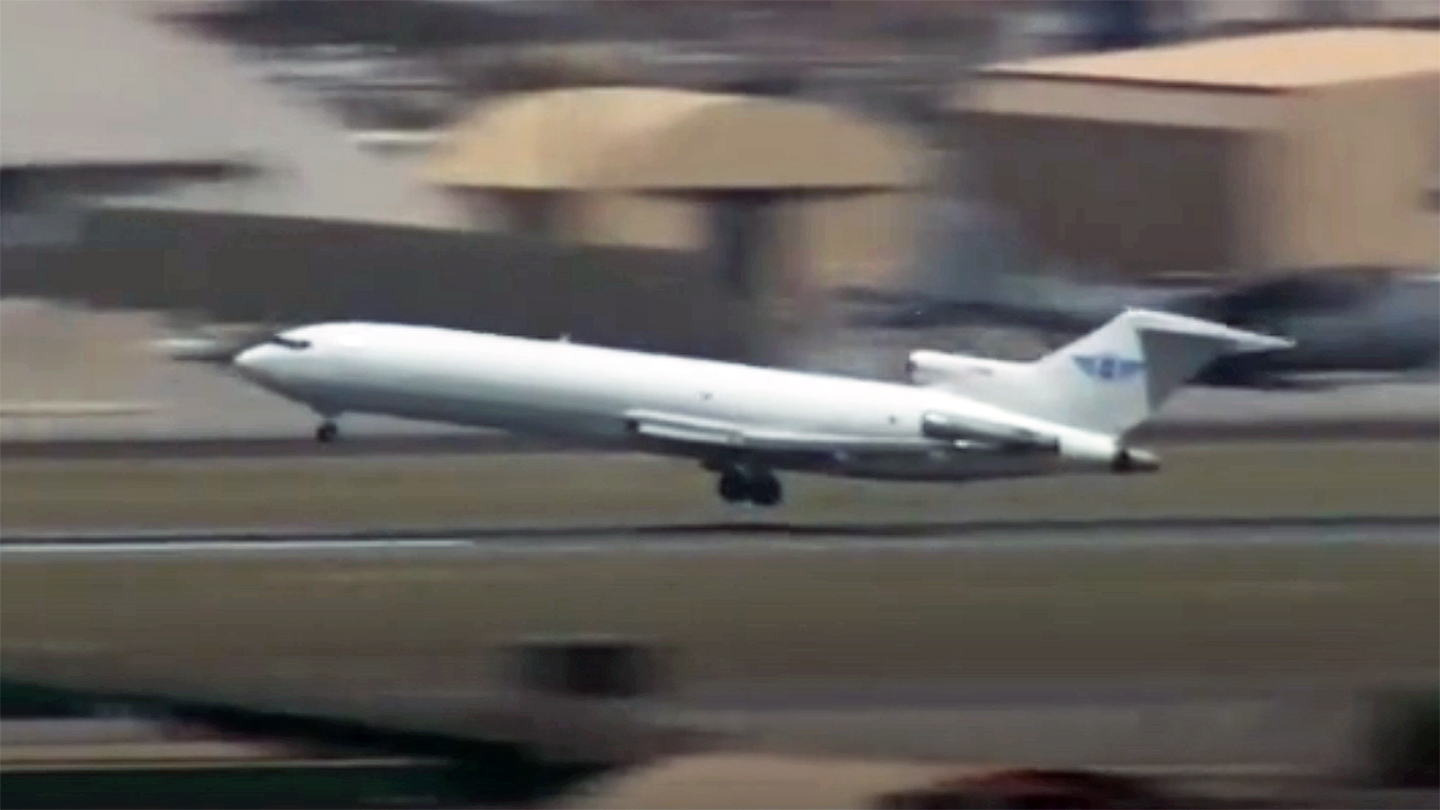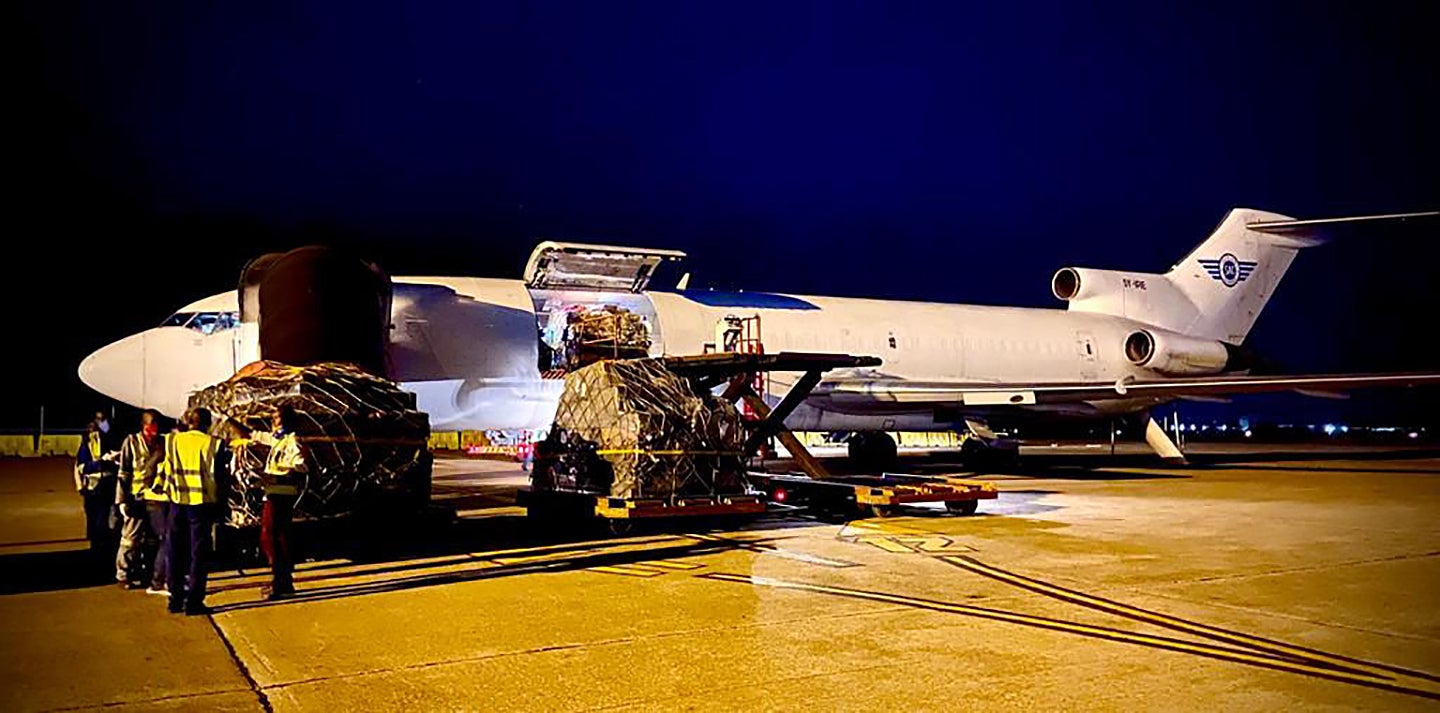The evacuation of Kabul is like none other in history. With open-source intelligence tools abound, including daily satellite images, flight tracking, and even a live camera feed overwatching Hamid Karzai International Airport, the average person can keep tabs on this historic event and unprecedented multi-national military operation in their own homes. In the panopticon that is today’s internet age, peculiarities stand out. One such surprise was seeing a gleaming-white, but quite geriatric 727-200 appear on Kabul’s ragged skyline, landing at the under siege airport amongst the constant flow of C-17s, A400Ms, C-130s, a few modern airliners, and other usual suspects.
While all-white airframes aren’t supposed to attract much attention, that paint scheme is also synonymous with clandestine operations, including “whitewashed” aircraft often used by the Central Intelligence Agency (CIA) and U.S. Special Operations Command (SOCOM) for low-profile operations abroad. With that reality in mind, keen observers keeping an eye on traffic at Hamid Karzai International rightfully started thinking this may be some CIA asset that was slipping in on a unique mission. It turns out, that wasn’t necessarily the case. Thanks to a wonderful story by Erika Gibson of South Africa’s Mail and Guardian, we learned the backstory on this most interesting of participants in the tumultuous aerial evacuation of Afghanistan.

It turns out that Niel Steyl, the Captain of a four-decade-old 727-200 that flies for Safe Air Company, an airline and charter outfit based in Kenya, answered an emergency call from the U.S. State Department for immediate airlift assistance after a complex terrorist attack, which started with a suicide bombing, killed 13 U.S. troops, as well as at least 170 Afghans, on August 26th.
At the time, Steyl, his crew, and their 727, which carries the Kenyan registration number 5Y-IRE and is aptly nicknamed Irene, were forward based out of neighboring Kulob, Tajikistan. In the past, they had supported what was a relatively steady drawdown of U.S. forces in Afghanistan before the final dangerous push out of Kabul, which fell to the Taliban on August 15th.
Steyl told the Mail and Guardian:
“We received a desperate call from the US state department’s officials in Kabul after the suicide bombing attack on Thursday night asking whether we would be willing to assist with mercy flights… The urgency became critical to evacuate a group of Afghan special forces and their families. They have been assisting the US forces in the country for many years. As such, they would certainly have been killed by the Taliban as they are seen as traitors”
Their cargo for the dangerous sortie would be hundreds of ex-Afghan special operations forces that were being lodged in a warehouse within the confines of the airport. These troops had worked with the Americans for years and they would be top Taliban targets, but finding room on military airlifters leaving the country became a huge challenge. Hence the mercy flights by Irene.
It only took just 40 minutes to load up 308 people onto the cargo-configured 727, which would normally carry between a half and a third of that load during the type’s career as an airliner.
Steyl recounted the following about the flight to the Mail and Guardian:
“We expected a haggard group but were pleasantly surprised by the well-spoken and neatly dressed group – despite them being holed up in a warehouse under trying conditions for a week. It was humbling to experience the sheer relief and appreciation from their side that we came in time to save them.”
Here’s a video of Irene in action, albeit on a far less volatile mission:

Because the soldiers and their families could not fit on a single 727 flight, another trip would be needed.
On the second trip, they had to stop all movement on the ground at Kabul and could not load and depart quickly because U.S. forces were executing a departure ceremony for the 13 Americans who died during the bombing at Abbey Gate. Once cleared to load and leave, the second flight saw 329 souls packed aboard the old 727. All of the refugees were taken back to Tajikistan where they would wait in a tent community until a further airlift arranged by the U.S. government could move them on to other locations once the evacuation of Kabul was complete. The passengers didn’t even know where they were when they landed, they were just happy to be out of Afghanistan and away from the Taliban.
While Safe Air and Irene’s crew are no strangers to flying into dangerous areas in Africa, basically saving hundreds of people, entire families, from the clutches of the Taliban certainly must have been very rewarding. Still, an old 727 loaded with over three hundred people, while not having the millions of dollars worth of defensive capabilities that their military airlifter counterparts have, and flying into what is basically a war zone under extreme terrorist threat in the middle of the day, takes guts.
Irene and her crew are one of many groups of heroes that risked life and limb for others during this tragic endcap to the two-decades-long war in Afghanistan. Once the last American boots leave Kabul and the dust settles, we know that there will be many other incredible stories to tell. But this one, about the little old 727 that could, is definitely worth spreading.
You can check out Erika Gibson’s Mail and Guardian piece on Irene’s missions into Kabul, which includes more details and some great photos, here.
Contact the author: Tyler@thedrive.com
